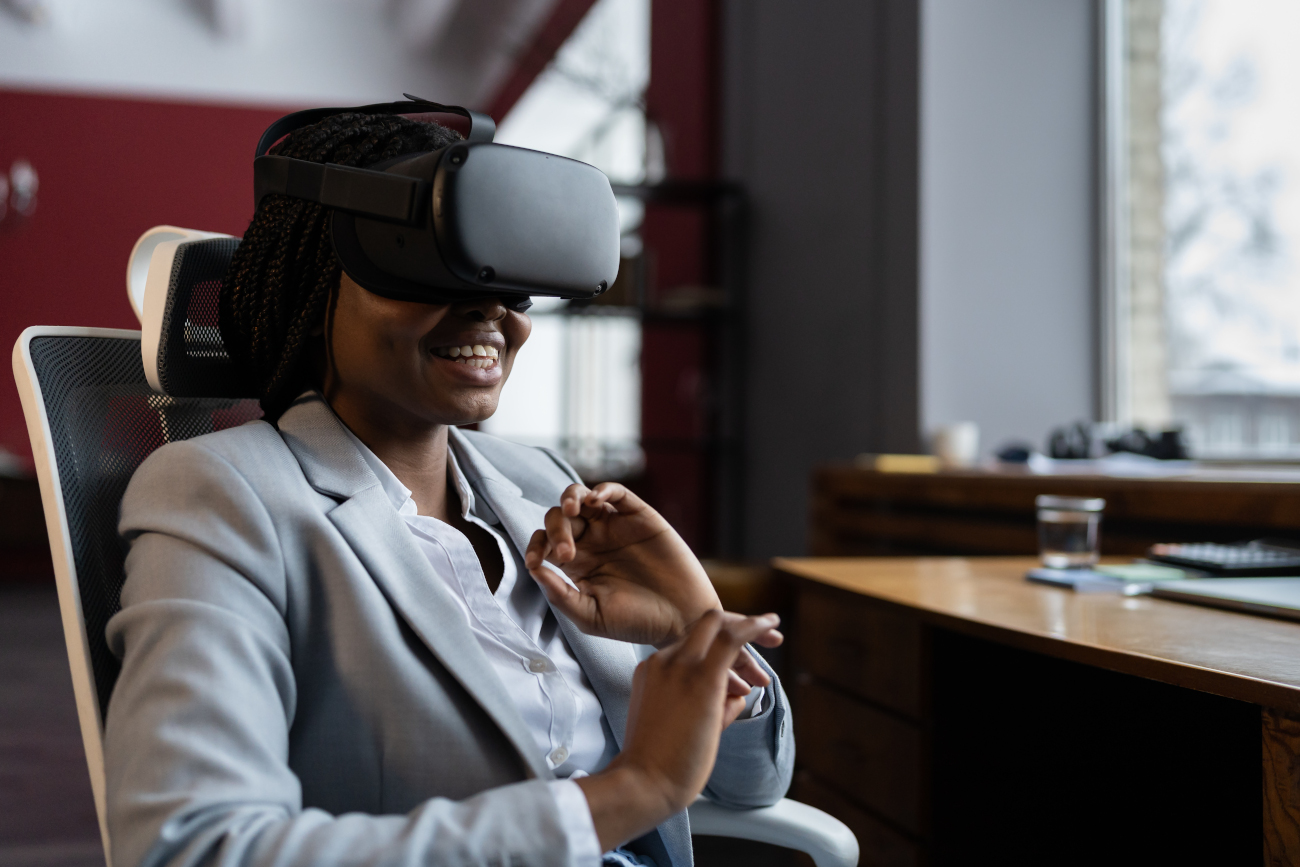Virtual reality technology is more accessible than ever before. Lower cost and a better design have made it a fast-growing feature in eLearning and business training.
Virtual reality or VR creates realistic simulations that users can interact with in a virtual environment. They are lifelike scenarios that can be developed for any purpose. Employees can use the simulation to gain experience without risk.
The tech includes sight and sound with a 360-degree perspective that immerses the user. It really feels like you are in the scene. Developers can recreate anything that is found in real life, including people, machinery, tools, and more.
Today’s VR can be used online, which means multiple users can interact in the same virtual space. Trainers or other trainees can join the same simulation to work through interactions, practice tasks, or do anything else they might need to do on the job.
It’s a wonderful addition to the training industry, especially for professions that require training in or around dangerous or expensive resources, like hazardous spill clean-ups, disaster preparedness, or working at heights. Now all these things can be learned with no risk to the trainee and trainer through VR.
It is also a valuable tool for jobs that are typically less hazardous, like customer service. By creating simulated experiences, employees can learn the ropes and develop soft skills that will make them better able to navigate interactions with customers and others.
Practice Common Customer Service Responses and Dialogue
Anyone who works in customer service knows that there are certain questions and requests that come up a lot. For example, retail employees at a customer service desk probably get asked about returns on a daily basis. Seasoned workers probably know store policies and can answer related questions quickly. New hires may find this challenging until they get the hang of it.
By including this in VR training, new hires will become better acquainted with store policies and practiced at reciting them as needed. This will help them work through their first customer interactions smoothly and confidently.
While it may be nearly impossible to predict every single question a customer will ask, it is possible to train employees on the ones you know they will encounter. VR helps users store and recall knowledge by creating memorable situations that feel like real life. It’s far more effective than reading text on a page.
VR experiences can also be used to test new hire knowledge so trainers can figure out which policies and information they may need to brush up on before they are put in front of customers.
Improve Situational Awareness for a Better Customer Experience
The best customer service employees need to have good situational awareness. They need to be able to perceive the environment around them and how it could affect their ability to do their job as well as the customer experience.
Businesses are now using VR to improve their team’s situational awareness by giving them practice scenarios. For example, a scene from a store or office could be presented. The user is tasked with observing the scene and identifying anything that might be out of place or a hazard.
If the scene shows an aisle in a store, the user could look for items placed on the wrong shelves, spills on the floor, or light bulbs that need to be replaced. Learning to look for these issues in training will make them more capable of identifying problems and fixing them before the customer notices while on the job.
This can also work for health and safety reasons. If customer service employees work in an office answering phones, an office scene could be used. They can identify tripping hazards, messy workspaces, and other problems that will help the office run better.
Even though customers never enter the space, situational awareness helps each employee keep it safe and functional for the team.
Nurture Empathy for Customers with Roleplay Scenarios
It’s not always easy to understand the struggles of another person, especially if they aren’t obvious.
Good customer service requires empathy. Sometimes, employees get lost in their daily tasks and become annoyed when a customer interrupts them with a question or request. Having empathy for that customer will help the employee handle the situation appropriately and with kindness and courtesy.
Using VR, training courses can present interactions from both sides. Users can work through a scenario as the worker and then change roles and become the customer. Maybe someone is late for an appointment, has a sick baby at home, or is low on money and trying to make ends meet and that’s why they seem pushy, difficult, or distracted. Understanding this will better equip employees for handling each situation effectively while on the job.
The employee can’t fix these problems for the customer, but they can improve the way they provide service to help the customer as much as they reasonably can.
Practicing these interactions also allows employees to learn their jobs better while they further develop their sense of empathy.
VR Works for Any Kind of Customer Service Setting
One of the most appealing things about VR training is its versatility. Any setting can be recreated. If a business has employees that work face to face with customers, that can be created as a VR scenario. If customer service staff answer phones or use live chat, then these interactions can also be recreated.
Give trainees as authentic an experience as possible using virtual reality.
Since it’s all virtual, you can easily add new scenes and scenarios or completely re-make the content if anything changes. It’s as flexible as customer service training gets.
Practice Handling of Difficult or Intense Situations
It’s important to prepare employees for potentially difficult or intense situations, even if they rarely happen. Working with the public can open businesses up to a lot of unexpected interactions – and some can be very negative.
You can guide staff on how to deal with a belligerent customer through a VR scenario. Getting that realistic experience will help them prepare in case they encounter an angry or aggressive person in the wild.
This is also an opportunity to train staff on handling dangerous situations, like a robbery. If you are lucky, your team will never have to deal with a crime. However, it is best for them to be prepared just in case. And VR is a great way to do it.
Using a VR scenario, you can show employees how to handle a robbery, shoplifters, or any other criminal activity. Give them the skills to handle the situation as safely as possible without putting themselves or others at risk.
VR is taking customer service training to the next level. Learn more about this and other eLearning topics at LMS.org.







